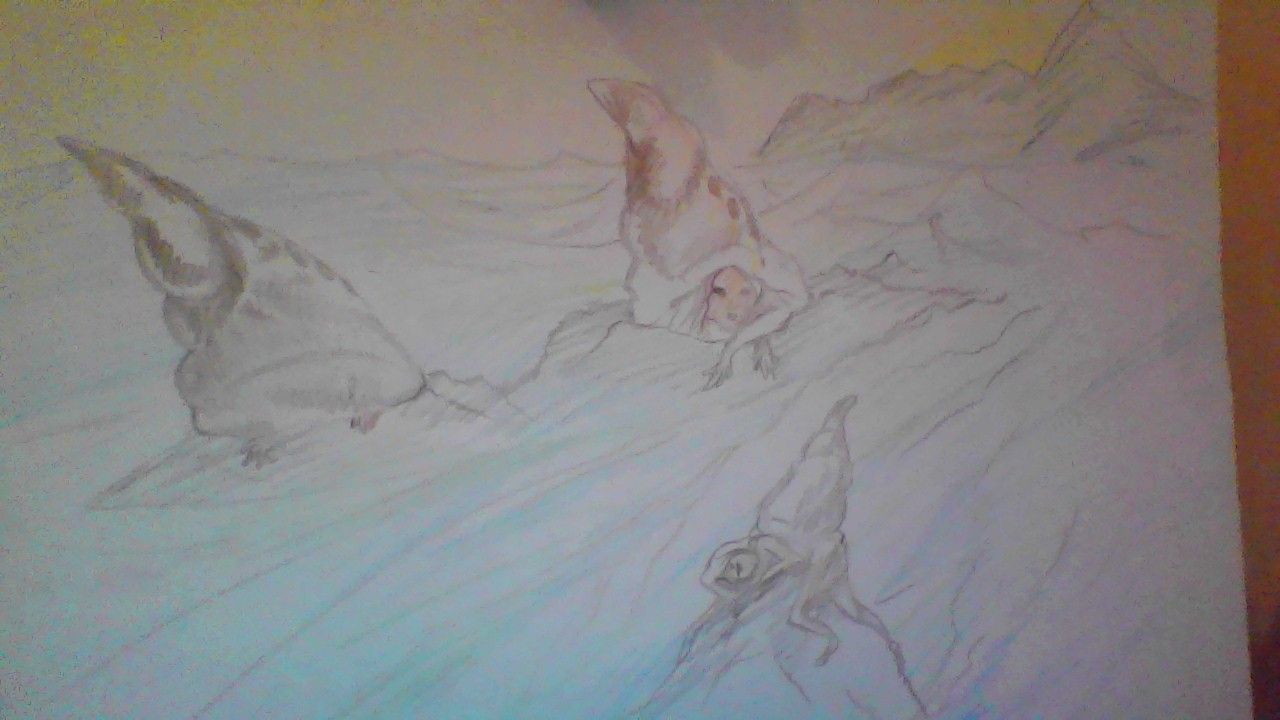
In the middle intertidal area live Unicorn Shell Humans. They are similar and named for the Unicorn shells, predatory snails. They enjoy eating snails, actually. They drill into other snails and eat them. They live alone, but come together in groups of 30-40 to mate. Despite females laying many eggs, few young survive as they prey on their unhatched siblings. When not mating, which is primarily in May, unicorn shell people seek food.
On the end of the shell is a “can opener, or spine which is used to open the shells of other intertidal animals. They are larger than most, but they tend to prey on small prey when they can. Some lucky periwinkles crawl up onto the unicorn shell human’s shell and out of reach before the human can seize them. There are round, hard trap doors called opercula on turban snails and periwinkles, but the file-like tongue of the unicorn shell human, it can easily drill through the door using chemicals to dissolve it! They are very hungry and need to eat a lot to support their size. They secrete a toxin to paralyze prey and this helps them to catch and retain food. At low tide. The unicorn shell human gets on top of a barnacle. When the tide rises, the unicorn shell is pushed under the barnacle’s plates. This spine keeps it open so the proboscis can go eat the animal inside the shell.
Sometimes they venture to the Splash Zone, or upper intertidal area the creatures are seldom submerged and must adapt to air. It is high tide or higher usually and wave splash and spray gives it the name “Splash zone” which provides most of the wetting. The rare shelled humans that reside along these coasts are well adapted to a world of both water and air. They are often exposed, and are therefore more adapted to survive outside of water.
Lichen darkens the rocks, so the shelled humans use natural camouflage on their shells. Sometimes local organisms grow over their shells adding to the disguise. The lichens help keep the rocks wet, which benefits the shelled humans. These shelled humans are likely to venture out though on hot days may find shelter in between stones and rocks. They breathe air like land snails and can live out of water for months. They can tolerate high temperatures but they will begin to suffer. In some regions, the shells are lighter to survive hotter temperatures. In cold areas, they tend to thrive if they have dark shells. Due to their size and value to the ecosystem, they are a keystone predator. They are able to consume many creatures. They are the same size as a normal human, but they can slip into their shells. They can cling tightly to the stones and rocks, using mucous to help seal and secure themselves. They can’t breathe well this way, and they can’t really eat much, however, they are able to stay on the rocks and stay damp.
Seasons in the Sea. May. Kim Fulton Bennet. http://www.seasonsinthesea.com/may/tidepools.shtml
No comments:
Post a Comment